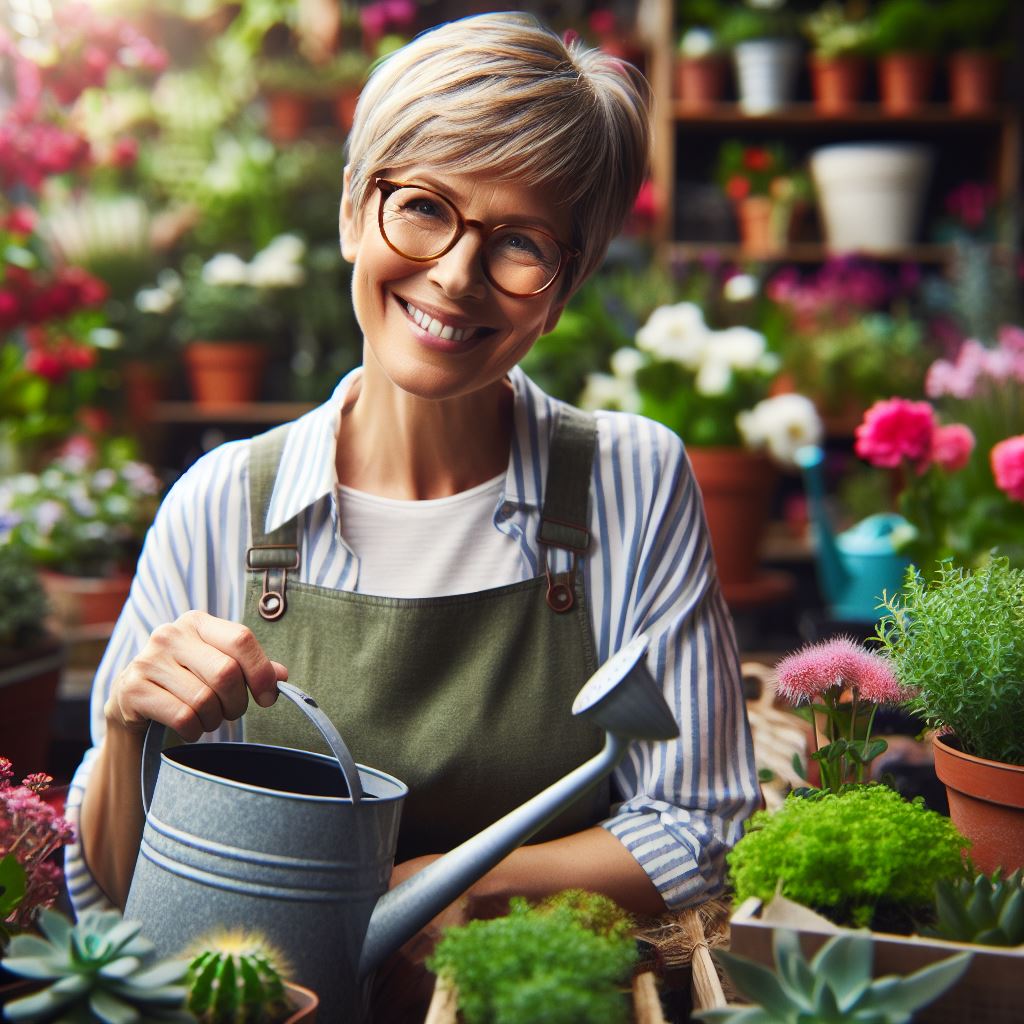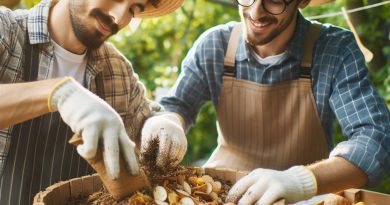Garden Tool Safety: What You Need to Know
Last Updated on March 2, 2024
Introduction
Are you aware of the potential risks and hazards when using garden tools?
Importance of garden tool safety
Garden tool safety is crucial to prevent accidents and injuries.
Proper handling reduces the risk of injuries, ensuring enjoyable gardening experiences while promoting a safe environment for users and bystanders.
Sharp tools should be handled with care to avoid cuts and punctures.
Wearing appropriate protective gear such as gloves and goggles shields against potential harm.
Regular inspection and upkeep of tools guarantee their functionality and reduce the risk of malfunction.
Prioritizing safety fosters an enjoyable and accident-free gardening environment for all enthusiasts.
Thesis statement
This blog post will discuss essential tips and precautions for ensuring garden tool safety.
Types of Garden Tools
List of common garden tools:
- Shovels
- Rakes
- Hoes
- Pruners
- Garden shears
- Garden forks
Different types of garden tools and their potential hazards
Shovels
Used for digging and lifting soil, but can cause strain or back injuries if used incorrectly.
Always bend knees and use proper lifting techniques.
Rakes
Designed for clearing debris, but can cause eye injuries if used carelessly.
Wear protective eyewear when using rakes.
Hoes
Ideal for cultivating and weeding, but can cause cuts if mishandled.
Keep hoe blades sharp and use gloves for a better grip.
Pruners
Used for trimming branches, but can result in cuts or hand injuries.
Always cut away from the body and wear gloves for protection.
Garden shears
Perfect for trimming hedges or shrubs, but can cause hand strain if not used correctly.
Use both hands and take frequent breaks.
Garden forks
Designed for turning soil, but can cause foot injuries if stepped on.
Keep forks away from your feet and wear sturdy shoes.
Importance of understanding how each tool should be used correctly and safely
- Prevent accidents: Knowing how to use garden tools properly reduces the risk of accidents and potential injuries.
- Extend tool lifespan: Using tools correctly ensures they remain in good condition for a longer time.
- Efficient gardening: Proper tool usage enhances productivity, making gardening tasks easier and more efficient.
- Promote garden health: By using tools correctly, you can maintain the health and well-being of your plants and garden.
- Personal safety: Following proper tool use guidelines keeps you safe while working in the garden.
By familiarizing yourself with common garden tools, you can ensure safe and efficient gardening.
Shovels are great for digging and lifting soil, but always remember to bend your knees and use proper lifting techniques to prevent strain or back injuries.
Rakes are handy for clearing debris, but remember to wear protective eyewear to avoid eye injuries caused by flying debris.
Hoes are ideal for cultivating and weeding, but be cautious as mishandling them may result in cuts.
Keep hoe blades sharp and wear gloves for a better grip.
Pruners are essential for trimming branches, but always cut away from your body to prevent potential cuts or hand injuries.
Wearing gloves while using pruners provides extra protection.
Garden shears are perfect for trimming hedges or shrubs.
However, it’s important to use both hands and take frequent breaks to prevent hand strain.
Garden forks are excellent for turning soil, but be careful not to step on them, as they can cause foot injuries.
To ensure safety, always keep forks away from your feet and wear sturdy shoes.
Understanding how each tool should be used correctly and safely is crucial.
It prevents accidents, extends tool lifespan, improves gardening efficiency, promotes garden health, and most importantly, keeps you safe while working in the garden.
So, let’s garden smartly and enjoy the fruits of our labor for years to come!
Read: Greenhouse Tips for Small-Scale Farmers
Precautionary Measures
When it comes to garden tool safety, taking precautionary measures is crucial.
By following these guidelines and wearing appropriate protective gear, the risk of accidents and injuries can be significantly reduced.
Wearing appropriate protective gear
Eye protection
Wearing safety goggles or glasses is essential to protect the eyes from flying debris, dust, and chemicals.
Gloves
Using gloves provides hand protection against cuts, blisters, and contact with harmful substances or sharp objects.
Closed-toe shoes
Wearing closed-toe shoes, preferably with steel toes, safeguards feet from accidental injuries caused by dropped tools or heavy objects.
Long-sleeved shirts and pants
Covering the arms and legs with long-sleeved shirts and pants helps shield the skin from scratches, bites, and exposure to chemicals or irritants.
Inspecting tools before use
Checking for defects or damages
Before starting any gardening task, inspect the tools carefully for any signs of defects, such as cracks, loose parts, or faulty mechanisms.
Damaged tools should not be used and must be repaired or replaced.
Ensuring handles are secure
Make sure that tool handles are securely fastened to avoid accidents due to loose or wobbly handles.
Using tools as intended
Proper grip and technique for different tools
Learn the proper grip and technique for each garden tool. Holding tools correctly improves control and reduces the risk of accidents.
Avoiding misuse or improvisation
Never use a garden tool for a purpose other than what it is designed for.
Avoid improvising tools or modifying them, as it can compromise their functionality and safety.
Storing tools properly after use
Cleaning and maintenance
Clean tools after each use, removing any dirt, debris, or plant matter.
Regularly maintain tools by sharpening blades, lubricating moving parts, and tightening loose screws.
Secure storage to prevent accidents
Store tools in a secure and organized manner, either in a locked shed or on a designated tool rack.
This prevents accidents and ensures that tools are easily accessible when needed.
By following these precautionary measures, gardeners can enjoy their gardening activities while minimizing the risk of injuries or accidents.
Remember to prioritize safety at all times and be aware of potential hazards.
Read: Raised Bed Gardening: Pros and Cons
Garden Tool Safety: What You Need to Know
Common Garden Tool Safety Tips
A well-maintained garden can bring joy and beauty to any home.
However, it’s essential to prioritize safety when using garden tools.
Here are some common safety tips to keep in mind:
Keeping children and pets away from gardening areas
Children and pets are naturally drawn to outdoor spaces, but it’s crucial to establish boundaries to prevent accidents.
Create a designated area and restrict access to young children and pets while you work.
Never leaving tools unattended
Leaving garden tools lying around can lead to unnecessary accidents.
Always put tools away in a secure location to avoid injuries to yourself or others who might accidentally come across them.
Using caution when operating power tools
Power tools can be useful for garden maintenance but must be handled with care.
Follow the manufacturer’s instructions, wear appropriate safety gear, and be aware of your surroundings.
Awareness of surroundings and avoiding tripping hazards
Awareness of your surroundings is crucial for preventing accidents.
Scan the area for potential tripping hazards like hoses, fallen branches, or uneven ground.
Clear any obstacles before starting your gardening tasks.
Having a first aid kit nearby for emergencies
No matter how cautious you are, accidents can still happen.
Keep a well-equipped first aid kit in an easily accessible location in case of any injuries during your gardening activities.
In general, prioritizing safety while working with garden tools is paramount.
By following these common safety tips, you can ensure a safe and enjoyable gardening experience for yourself and your loved ones.
Read: Mushroom Cultivation for Small Gardens

Safety Precautions for Specific Garden Tasks
Now that we have covered general garden tool safety, let’s take a closer look at the safety precautions for specific tasks that you may encounter in your garden.
By being aware of these precautions and following them, you can ensure a safe and enjoyable gardening experience.
Digging and shoveling
When it comes to digging and shoveling, it’s essential to use proper techniques to avoid strain and injury.
Always bend your knees and lift with your legs, rather than using your back.
This will help prevent back injuries and strains.
Additionally, before digging, make sure you are aware of any underground utilities, such as gas pipes or electrical cables, to avoid damaging them and potentially causing serious accidents.
Pruning and trimming
Pruning and trimming are important tasks in maintaining the health and appearance of your garden plants.
However, it’s crucial to use sharp tools for clean cuts.
Dull tools can create ragged cuts, making plants more susceptible to diseases and pests.
Also, make sure you do not overreach while standing on a ladder or use unstable platforms that could cause falls and lead to severe injuries.
Mowing and cutting grass
Mowing the lawn is a frequent task for garden maintenance.
Before you start mowing, clear the area of any debris, rocks, or objects that could damage the mower or be thrown around, potentially injuring yourself or others.
Additionally, it is strongly advised to avoid mowing barefoot, as you might accidentally step on a sharp object.
Always wear appropriate footwear for protection.
Lastly, handle the mower’s blades with care, ensuring they are properly installed and follow all safety guidelines provided by the manufacturer.
In essence, when engaging in specific garden tasks, it is crucial to be aware of the safety precautions specific to each task.
By following these guidelines, you can minimize the risk of accidents and injuries, ensuring a safe and enjoyable gardening experience.
Remember, always prioritize your safety and take the necessary precautions to protect yourself and those around you.
Whether you’re digging, pruning, or mowing, working safely in the garden is essential.
Read: Native Plants: Low-Maintenance Gardening
See Related Content: Homemade Remedies for Plant Diseases
Conclusion
Recap of the importance of garden tool safety.
It is essential to prioritize safety when using garden tools to prevent accidents.
Key tips and precautions
By following the key tips and precautions outlined in this blog post, you can ensure a safe and enjoyable gardening experience.
Be mindful of sharp edges to avoid accidents.
Keep tools out of reach of children.
Stay aware of surroundings while operating equipment.
By adhering to these precautions, gardening remains a fulfilling and injury-free activity, fostering a secure environment for all involved.
Encouragement to prioritize safety for an enjoyable gardening experience
Gardening should be a relaxing and fulfilling activity, and by taking the necessary precautions, you can avoid unnecessary injuries and accidents.
By taking precautions such as wearing protective gear, using tools correctly, and maintaining equipment, you can minimize the risk of accidents and injuries.
This fosters a sense of security and allows you to fully immerse yourself in the beauty and tranquility of your garden, enhancing your overall enjoyment of the hobby.


